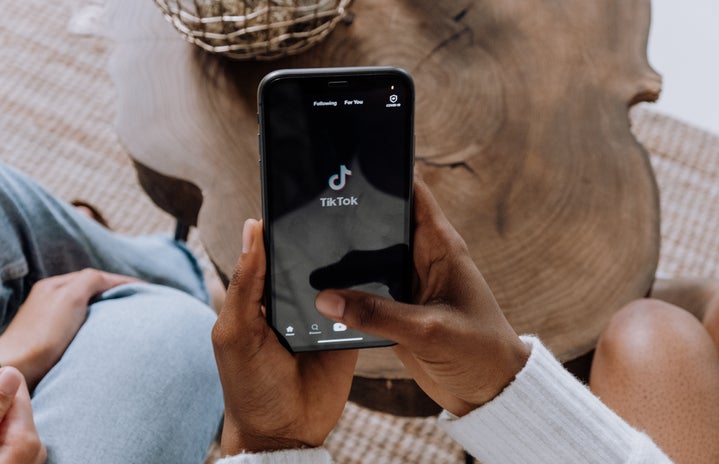The opinions expressed in this article are the writer’s own and do not reflect the views of Her Campus.
I was on Tiktok one night and saw a video with the hashtag in the caption titled, “#corecore.”
This particular video was strange. It wasn’t a meme or a storytime like it had initially seemed. It was a clutter of various clips, screenshots, and videos, accompanied by calming music in the background.
It conveyed themes of world crises, advancing technology, and homelessness. The video had Minecraft music in the background, which made it all the more melancholic. It confused me because as I watched the video, I resonated with it deeply but didn’t understand why.
I had seen “-core” videos before; they’re super common (at least on my ‘For You’ page). But I had never seen anything quite like this. I felt as though I was watching the birth of a brand-new internet phenomenon.
In order to understand ‘corecore,’ we need to understand the origins of the suffix “-core.”
THE ORIGIN
The suffix “-core” was initially used to describe music genres such as Emocore, Metalcore, etc.; this was a more well-known usage of “-core” in the late 2000s. It was seen as the core or essence of a music genre. People who resonated with these ‘-cores’ would use them as labels to claim themselves as part of a group or community.
However, “-core” is now commonly used to describe pleasant aesthetics and themes. There are now labels like Cottagecore, Dreamcore, and Kidcore. People still use these labels to describe their personalities. Corecore is not like these other labels.
The term “Corecore” is meant to be ironic. Because so many words can be attached with “-core” at the end , the name “Corecore” is a sarcastic take on this trend. In other words, it is the “Anticore”.
THE ART
Corecore isn’t confined to a specific aesthetic or theme. People don’t use it as a label for their styles or interests because it’s meant to be much more than an identity.
Corecore is a statement-making assortment of media curated to evoke certain emotions depending on the content. Some corecore videos can be depressing, introspective, or downright strange.
A lot of corecore videos have this nonsensical, absurd aura to them. One could generally look at a corecore video and not understand what they’re looking at because it’s all over the place.
There are even some variations of corecore that are far more absurd and less introspective, called “Nichecore” or “Pinkcore.” A lot of TikTok creators often use #corecore and #nichecore interchangeably, but they both have different characteristics.
Corecore videos are more than just edited collages of random media. They have deeper layers of meaning and social commentary. While these videos don’t have an obvious theme, they can exude topics such as declining mental health, environmentalism, homelessness, politics, overconsumption, etc.
It’s a visual commentary on the way mankind currently lives in the 21st century and how many of the everyday occurrences in the news, media, and current events affect us. Corecore holds up a mirror to society and allows us to reflect on how we have evolved.
Corecore is Tiktok’s artistic movement.
THE MESSAGE
Many of us seem disillusioned with life; corecore gives younger people an outlet.
A lot of Gen Z has been shown to display feelings of doom and distress toward the way we are living. Homelessness is on the rise, inflation is worse than ever before, and we may not be able to own our own property by the time we are our parents’ age.
People often feel saddened and powerless because we are more hyper aware of the world around us, and because a lot of Gen Z is still young, it feels like there is not much we can do about it. Corecore is a response to this.
Expressing our anguish and discontent with the world through social media, especially on a platform that is constantly changing, like TikTok, is a way to allow everyone to understand each other. We are all experiencing life as it is and the looming stress that we feel whenever we turn on the news.
Corecore asks us questions like: has media consumption affected us? Have we grown numb to the way we interact with tragedies, media, and culture? Have we stunted in growth as a society?
Corecore questions the current morale of the world and pushes for change or, at the very least, food for thought. It’s the Gen Z way.
THE FUTURE OF “-CORES”
Many would call Corecore the “Anticore,” but if we really think about it, even corecore has a theme: humanity.
Corecore is like a time capsule for the 21st century and it doesn’t have to stick to strictly being bleak.
Like #pinkcore and #nichecore, a new subgenre of #corecore has risen called #hopecore.
TikTok creators have come together to create videos with the same essence as corecore, only happier. Swelling music in the background, particularly Frank Sinatra’s “My Way,” is a popular song choice amongst hopecore creators.
My favorite #hopecore video so far has been this one.
If more people are hopeful about the future or want to be a part of the change because of videos like Corecore, then I am more than excited to see the impact corecore has on society and the future of art.
Is #corecore the future of visual art? Let us know @HerCampusSJSU.


